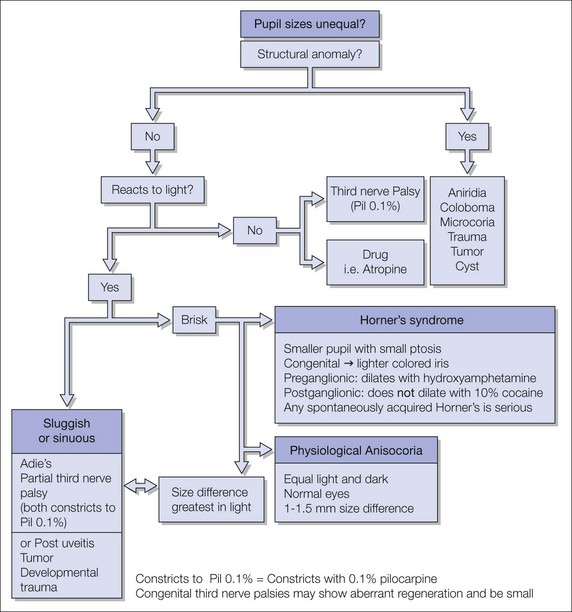Chapter 112 Unequal pupils
When anisocoria is found in a child, a simple step-by-step routine can be followed as outlined in Fig. 112.1. Anisocoria can be thought of as being due to one of four problems:
1. An abnormality of the sympathetic nervous supply to the dilator muscle.
2. An abnormality of the parasympathetic nervous supply to the sphincter.
3. A structural abnormality of the iris (congenital or acquired).
Oculomotor palsy
Anisocoria caused by congenital oculomotor palsy is rare and will virtually always be accompanied by some degree of ocular motility disturbance1,2 (see Chapters 82 and 83). The pupil may be spared or paradoxically miotic in congenital oculomotor palsies and congenital dysinnervation disorders. Adie’s pupil is extremely uncommon in the first decade of life except in association with chicken pox infection.




